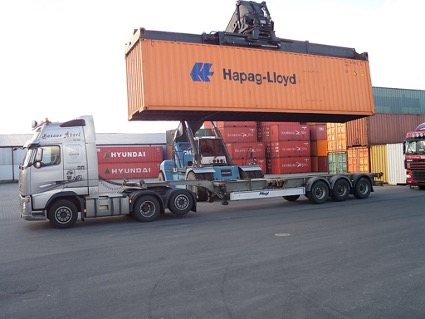
The container loading process can be complex, involving multiple factors, especially in the international transport of goods. Until a few decades ago, the loading and unloading process was done manually. However, the growth of international trade and the availability of various tools to optimize container loading has contributed to significant cost reduction. It also saves time and maximizes the safety of the goods during the loading and unloading process.
Developing a container loading plan is important because most of the carriers usually charge by the container for transporting the shipments. You have to pay a specific amount for a container, regardless of whether you fill it up with boxes or just put in a few. The cost of the container does not change with the number of products you put into it. Thus, it is important to utilize the space in the container efficiently so that you end up paying less per unit. In this article, we will discuss some tips which will help you in developing a better plan for container loading.
1. Load planning software
Before the advancement of technology, load planning was done with the help of a pencil, ruler, and graph paper. However, even the most efficient load planners could not crunch the numbers for developing an efficient plan as accurately as a computer system can. A load manager logistics software does the majority of the job for you. All you would have to do is enter the weights and dimensions, as well as the number of pieces in the cargo. Besides this, you can also add other details that indicate whether the pellets can be stacked on top of each other or rotated. The software will use this information to produce efficient container loading plans taking into account the correct weight distribution. You can then choose the one that suits your needs in the best way.
2. Careful measurement
You can develop a good container loading plan only if the data you use is accurate. If you do not perform the measurements carefully, you will not be able to utilize the space in the container efficiently. Besides this, your cargo load might also get damaged during the process of shipping. Thus, it is very important to get the details right before developing a loading plan. You must ensure that every piece of the load is carefully measured and weighed. You should also take note of any restrictions that might be applied during the loading process. The data should be entered into the logistics software accurately.
3. Strategic choosing of containers
The size of the container is a very important factor in the development of a container loading plan. This can be understood with the help of an example. If you have a 40-ft container, the cost of moving it would be significantly higher than a 20-ft container. To load a 40-ft container more efficiently in such a case, a company can plan to load it with lightweight shipments so that it can be moved around more economically.
In cases when your load is less dense, you can benefit from the extra height that is provided in high-cube containers. However, if the load is quite dense, getting a high-cube container would not help because you will hit the legal weight before you make use of that extra space. For developing an efficient container loading plan, it is best to evaluate the pros and cons of different types of containers, especially in the case of heavy-weight shipping.
4. Use creative packaging techniques
While the shipping logistics software will take care of the science of container loading, better packaging techniques can help in making better use of the container space. You can get creative with the packaging and modify the packaging techniques to free up room for adding extra pellets in the container.
5. Make the cargo load compact
When you are shipping large items, you need an open container or a flat rack, which usually costs more than standard containers. You can reconfigure or disassemble a load so that it can fit the standard box more easily. The key is to make the cargo load as compact as possible.
Conclusion
By using these tips and techniques, you would be able to carry out the container loading process more easily. A load manager logistics software can help you in developing the most efficient plan for container loading. By using your own techniques, in addition to the software-generated plan, you will be able to cut down the costs of shipping significantly.
Popular search:
Loading process Automation, address optimizer, address resolver, 3d bin packing, cartonization software